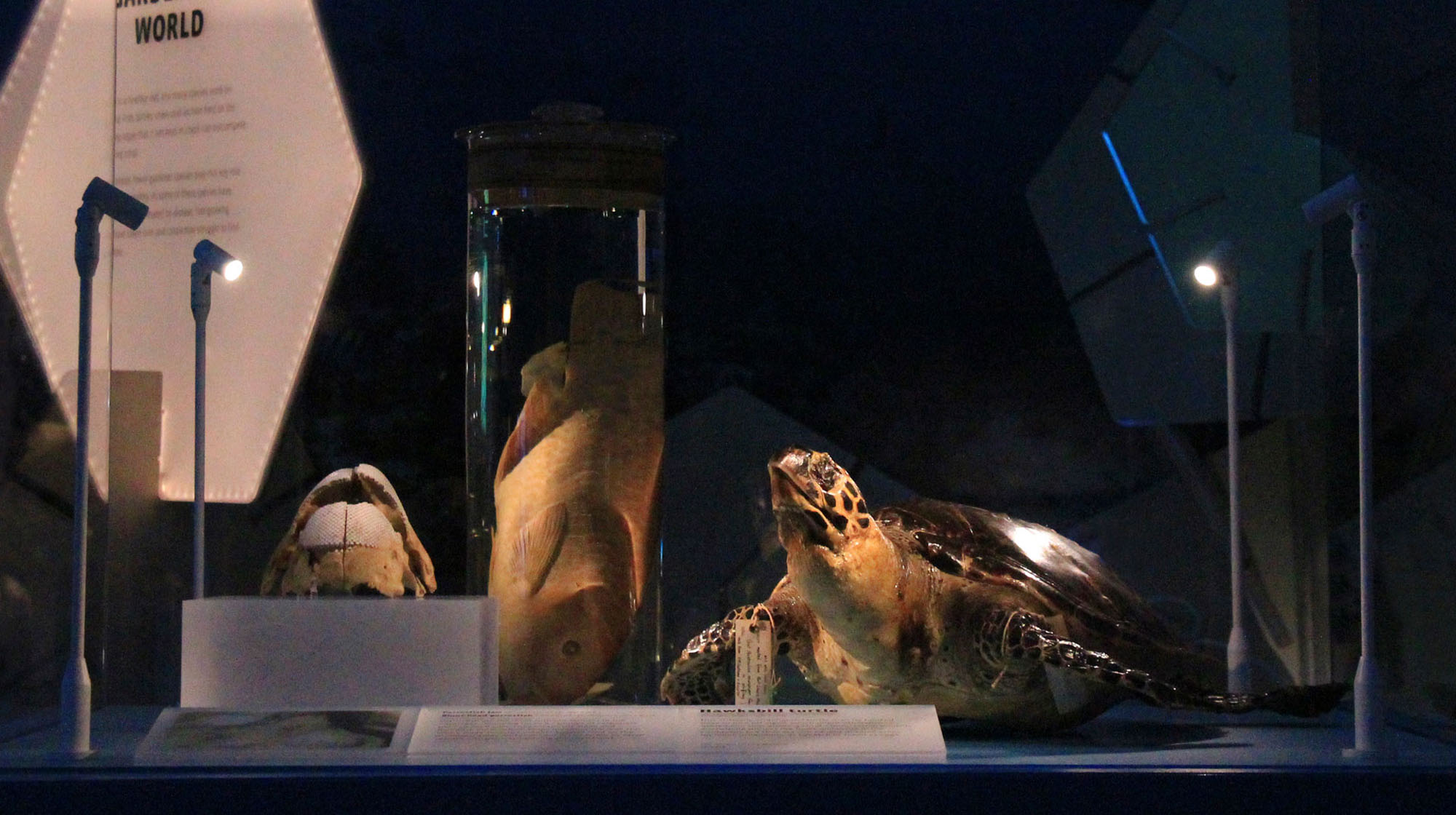
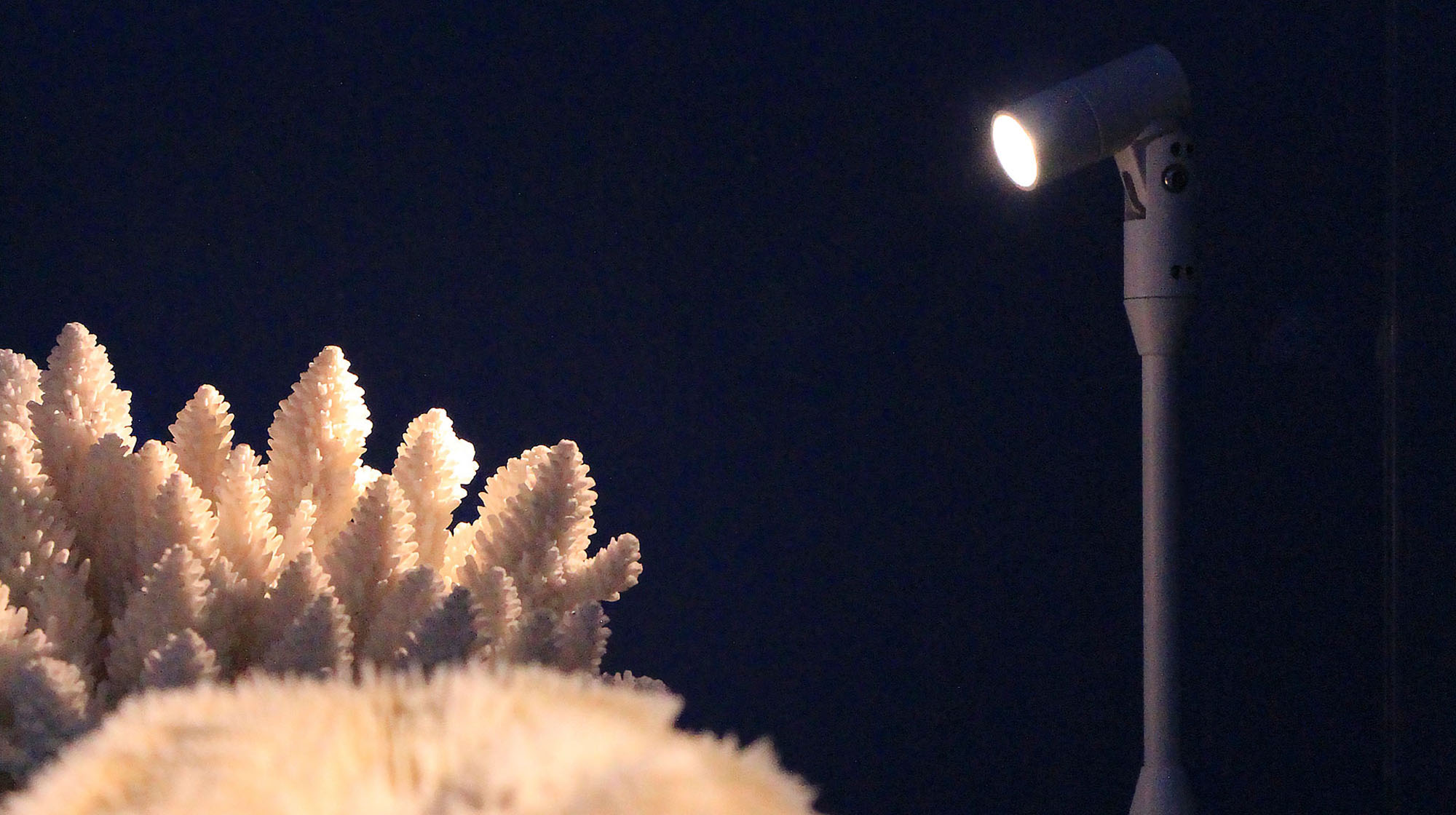
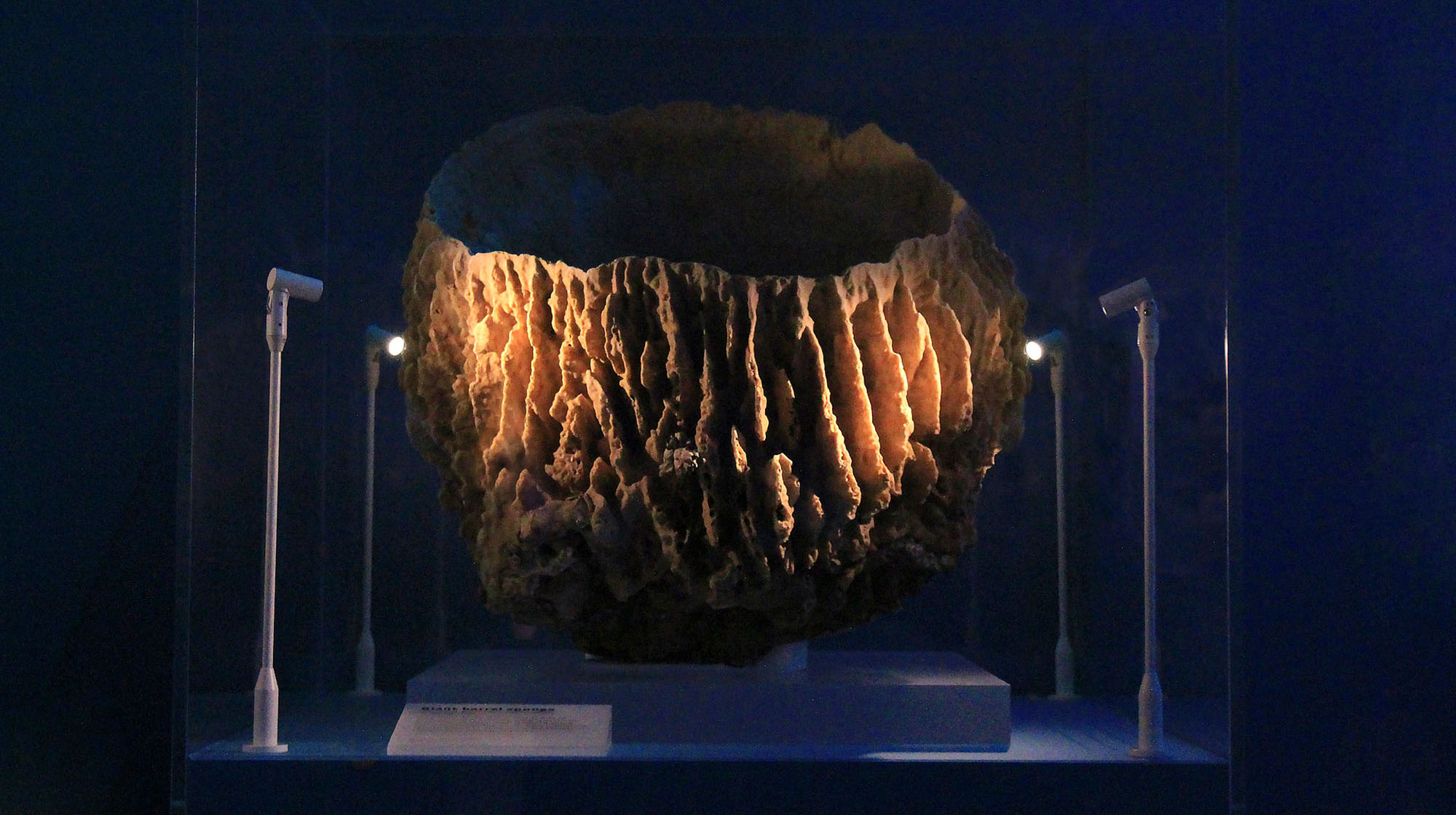
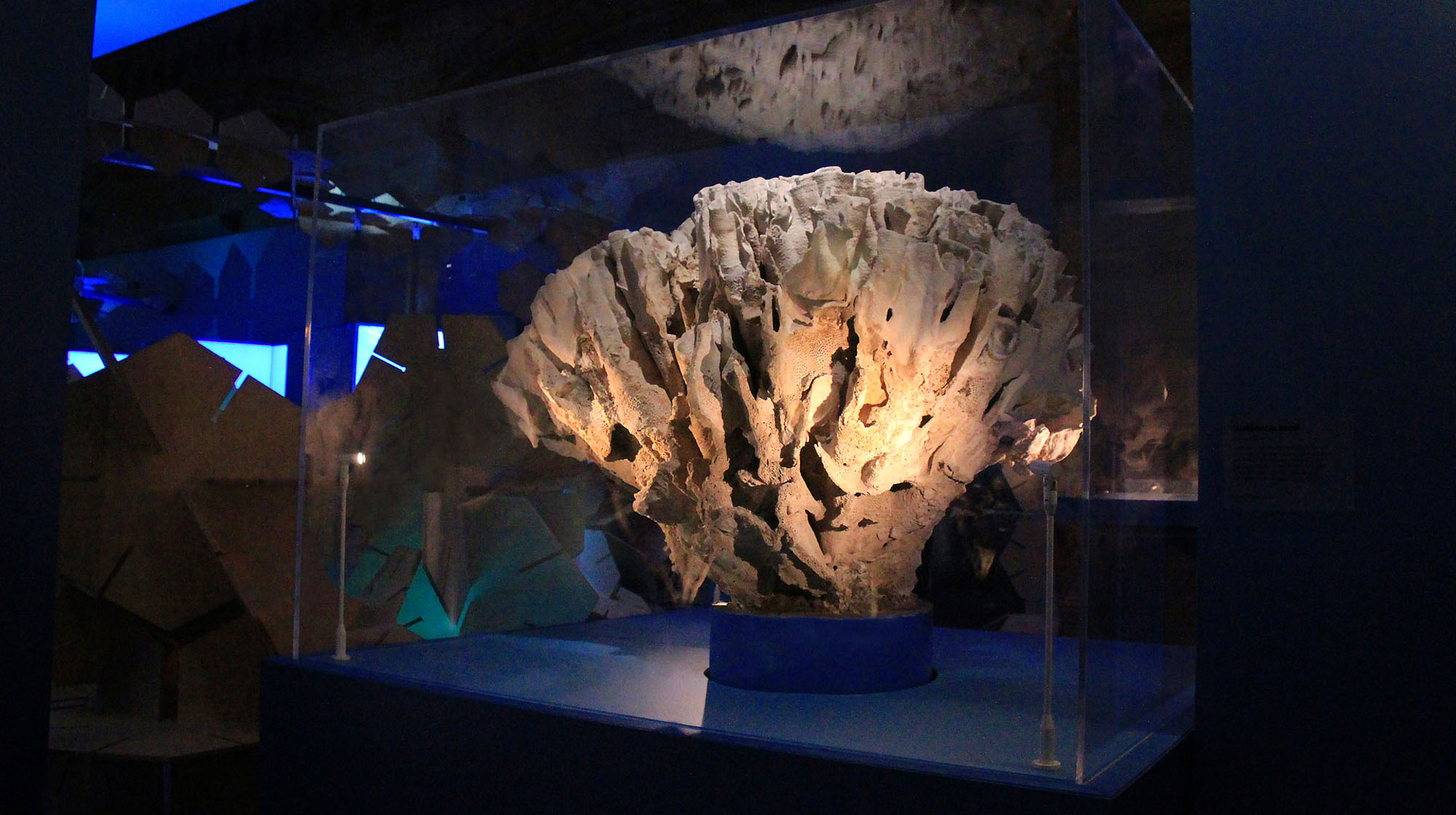
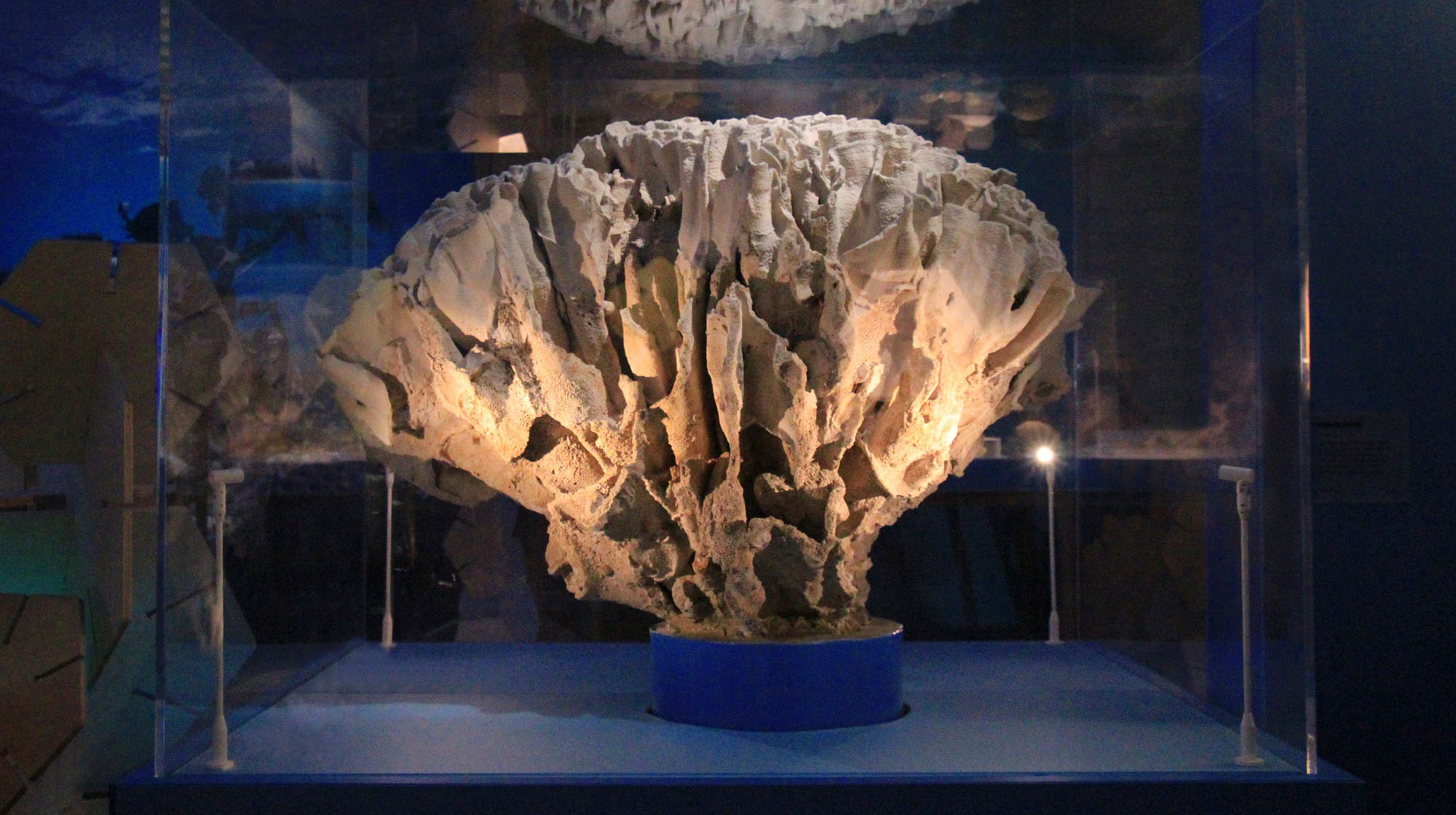
When lighting designers Studio ZNA needed a flexible spotlight to illuminate the natural treasures within the Natural History Museum’s latest temporary exhibition, they turned to Precision’s Pico LED spotlight range.
The exhibition, ‘Coral Reefs: Secret Cities of the Sea’ features over 250 specimens in a fascinating experience that tells an incredible story of biodiversity in the shallow waters of the Tropics.
Acclaimed as one of the most immersive exhibitions the Natural History Museum has ever produced, the innovative use of sound and lighting within the exhibition combine to create an enchanting experience of being under the sea. Further design elements incorporate hexagonal decorative structures, designed to imitate the growth of coral, and a captivating virtual reef dive that will surely inspire visitors to recognise the vital role that coral plays in the planet’s ecosystem.
Studio ZNA, the award winning lighting design practice whose prior museum credits include London’s V&A Museum and the Science Museum, were tasked with bringing the varied oceanic riches featured to life.
Studio ZNA selected a number of characteristic Pico S1 LED spotlights to light the incredible specimens that make up the exhibition, including a giant clam, a variety of sponge samples, and a number of highly significant coral samples, including six corals collected by Charles Darwin in the 1800s during his voyages of discovery aboard the HMS Beagle, presented at the exhibition alongside his handwritten notes.
Over 60 of the distinctive stem-mounted spotlights were used in this beautiful display of exotic coral species, with the Pico fittings mounted and aimed to reflect each sample’s uniqueness.
For the Giant Turbinaria coral, a metre-wide coral that is one of the flagship exhibits, the stem mounted Pico luminaires dramatically illustrates the many ruffled ridges of the sample, with the 30° flood optic washing light across the coral, illustrating the cavities in which thousands of marine animals once inhabited. The 115lm output of the spotlights adds a touch of theatre to the unique folds of the hardened exterior, with the contrast between the labyrinth-like crevices illustrated with aplomb.
The studio also specified a large number of surface mounted Pico fittings, sharing the stem-mounted variants’ optical performance, but with a minimal aesthetic and delicate footprint, the luminaires could be installed within the exhibit’s cabinets. These miniature luminaires’ unobtrusive appearance serves to ensure the visitor’s attention is on the specimens presented, rather than the light source illuminating them.
For specimens that could be handled by visitors to the exhibit, the advanced accurate aiming features of the Pico family were put to good use. With a low friction bearing 360° rotation and a constant torque tilt mechanism, beam accuracy can be acutely fine-tuned. As both the pan and tilt rotation can be locked, the exhibition team can be sure the luminaires are always casting the coral specimens in the best light despite the close proximity to visitors.
Studio ZNA recognised the flexibility found throughout the Pico range thanks to this innovative control, further supplemented by a choice of three site changeable optics. Despite these advanced features, the stem-mounted version of the spotlight remains delightfully delicate; with a total weight of just 100g, and a luminaire head of just 40mm length, the form-factor of this miniature spotlight remains unparalleled. For applications where discretion is paramount, such as the exhibition’s cabinets, the surface variant is even more discrete, with a total weight of just 47g, and is installed using a miniscule 37.5mm diameter mounting plate.
The Pico family’s star-turn at the Coral Reef exhibition is not the first time this unique spotlight has been featured in a landmark museum environment. Pico, whose innovative features are not usually found within luminaires so small, also performed to acclaim in the Imperial War Museum, and has illuminated other biological marvels in the Nature Library at the Manchester Museum.
Project Name: NHM Coral Reef
Location: London
Share